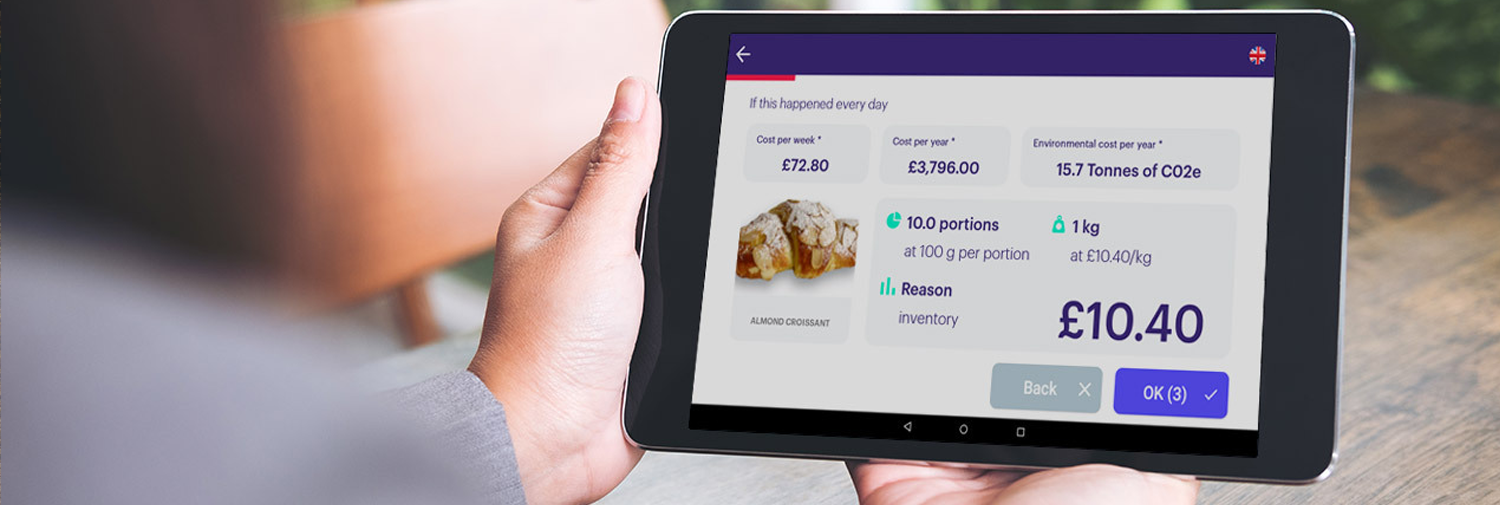The U.K. is currently experiencing its highest food inflation rate in 30 years, while the U.S. is seeing a 40-year high at a 7.5% increase from 2021.
Soaring food prices, along with a global energy price hike (prices are rising by 7% a year in the UK alone) are creating huge operational challenges for kitchens globally.
A number of factors contribute to the inflation of food prices, both historically and trend-driven.
Let's take a look at the underlying causes that drive food prices up.
The Ukraine Crisis
The war in Ukraine has added stress on energy markets and generated new challenges in food staples like wheat, oils and fats, fish, and fertilisers.
Russia and Ukraine account for approximately 30% and 20% of global wheat and corn exports, respectively.
Interested in seeing how you can tackle food inflation? Request a demo to find out you can save more money. 
High Oil Prices
High oil prices raise shipping costs and increase gas prices.
Oil by-products are a significant component of fertiliser, which has adverse effects at the very start of the supply chain for meat and fresh produce. Rising oil prices also increase gas prices, which in turn affects the transportation and delivery of food.
Government Subsidies
The United States and Europe currently mandate the increased use of ethanol and biofuel, which diverts farmland away from food production.
The U.S. now uses 37% of its corn crop to make ethanol, taking corn out of the supply chain and hiking up prices.
The International Monetary Fund estimates that ending farm subsidies in the industrialised world would increase global income by $100 billion.
Climate Change
Climate change creates extreme weather, which causes greenhouse gas emissions to trap heat, and increase air temperature. Hot air absorbs more moisture and impacts rainfall, which damages crops and decreases yields.
Most years see major events that impact food costs, however, the past few years have been eventful, to say the least. There are two major factors at play currently influencing rising food prices on a global scale.
So far, vegetable oils have incurred the biggest price hike: rising 23.2%, driven by higher quotations for sunflower seed oil, due to Ukraine being the world’s leading exporter of sunflower oil, and Russia the second.
COVID-19
The pandemic continues to affect the production and transportation of food. Global lockdowns disrupted production, causing supply chain issues we’re still feeling the effects of now. COVID-19 slowed meatpacking plants in 2020, causing a spike in prices and threatening workers.
Shaun Allen, Prestige Purchasing chief executive, said: “Inflation now constitutes an existential threat to many businesses in the hospitality sector. The Ukraine war has the potential to drive an extended period of increasing food and drink costs, which if coupled with recent changes to VAT, rising labour costs and potentially falling volumes could well generate conditions worse than during the pandemic. Best in class procurement skills will be an essential part of the operator toolkit in the years ahead.”
For many kitchen operators, making buying decisions under conditions of scarcity is fast becoming the norm.
Passing on increased costs with price rises just isn’t going to cut it. The cost of living crisis rages on, with one in 10 people stating that their monthly outgoings have risen at least £500 higher thanks to rising energy prices and inflated food costs.
Operators need to budget for costs that can’t be cut and focus on those that can—like:
- Purchasing
- Negotiating with suppliers to reduce costs,
- improving inventory management to better manage stock levels,
At this crisis point, though, addressing food waste as an operational solution makes the most sense, financially and environmentally.
Data shows 5%-15% (and in some cases up to 20%) of food is discarded in commercial kitchens.
Prioritising food waste management can save hospitality businesses thousands annually.
For example, Winnow has been working with Hilton Tokyo Bay to help them leverage data analytics to reduce food waste. Within the first 4 weeks of usage, before the pandemic had started impacting travel, the team successfully cut food waste by 30%.
This is equivalent to saving more than 17,016 meals and over ¥3,3 million or US$31,000 annually.
The bulk of these savings can be made by carefully monitoring plate waste, which accounts for an overwhelming 34%of food waste in commercial kitchens.
In 2021, we launched Winnow Sense, a touchless measurement solution for kitchens.
The system automatically takes a picture of what's left on each plate and builds a dataset for a Winnow analyst to perform an accurate audit. Armed with the results, operators can adjust menus and increase product yields while cutting costs and giving customers more of what they want.
In short, conducting a thorough audit of discarded food in your kitchen is the only way to combat, over-purchasing and over-production of foods your customers just don’t want.
To learn more about Winnow's suite of tools, visit our solutions page.
Interested in seeing how you can tackle food inflation? Request a demo to find out you can save more money.








Comment on my blog